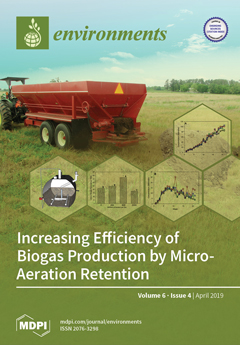PM
2.5 pollution is of great concern in China due to its adverse health effects. Many diseases have been proven to be associated with PM
2.5 components, but the effects of chemical characteristics of PM
2.5 on toxicological properties, especially in different human organs, are poorly understood. In this study, two seasonal PM
2.5 samples (summer and winter) were collected in Nanjing, and their chemical compositions (heavy metals, water-soluble ions, organic carbon (OC), and elemental carbon (EC)) were analyzed. Human lung epithelial carcinoma cells (A549), human hepatocellular liver carcinoma cells (HepG
2), and human neuroblastoma cells (Sh-Sy5y) were employed to evaluate the toxicological properties of the collected PM
2.5. The results showed that the average mass concentrations of PM
2.5 were lower in summer (51.3 ± 21.4 μg/m
3) than those in winter (62.1 ± 21.5 μg/m
3). However, the mass fractions of heavy metals, OC, and EC exhibited an opposite seasonal difference. Among all tested fractions, water-soluble ions were the major compositions of particles in both summer and winter, especially the secondary ions (SO
42−, NO
3− and NH
4+). Besides, the ratio of OC/EC in PM
2.5 was greater than two, indicating serious secondary pollution in this area. The NO
3–/SO
42− ratio (< 1) suggested that fixed sources made important contributions. The toxicological results showed that PM
2.5 in the summer and winter significantly inhibited cell viability (
p < 0.01) and induced intracellular reactive oxygen species (ROS) production (
p < 0.01). Moreover, the viability inhibition in A549, Sh-Sy5y, and HepG
2 cells was more prominent in summer, especially at high PM
2.5 (400 μg/mL) (
p < 0.05), and the induction of reactive oxygen species (ROS) in A549 and Sh-Sy5y cells was also more evident in summer. Such seasonal differences might be related to the variations of PM
2.5 components.
Full article





